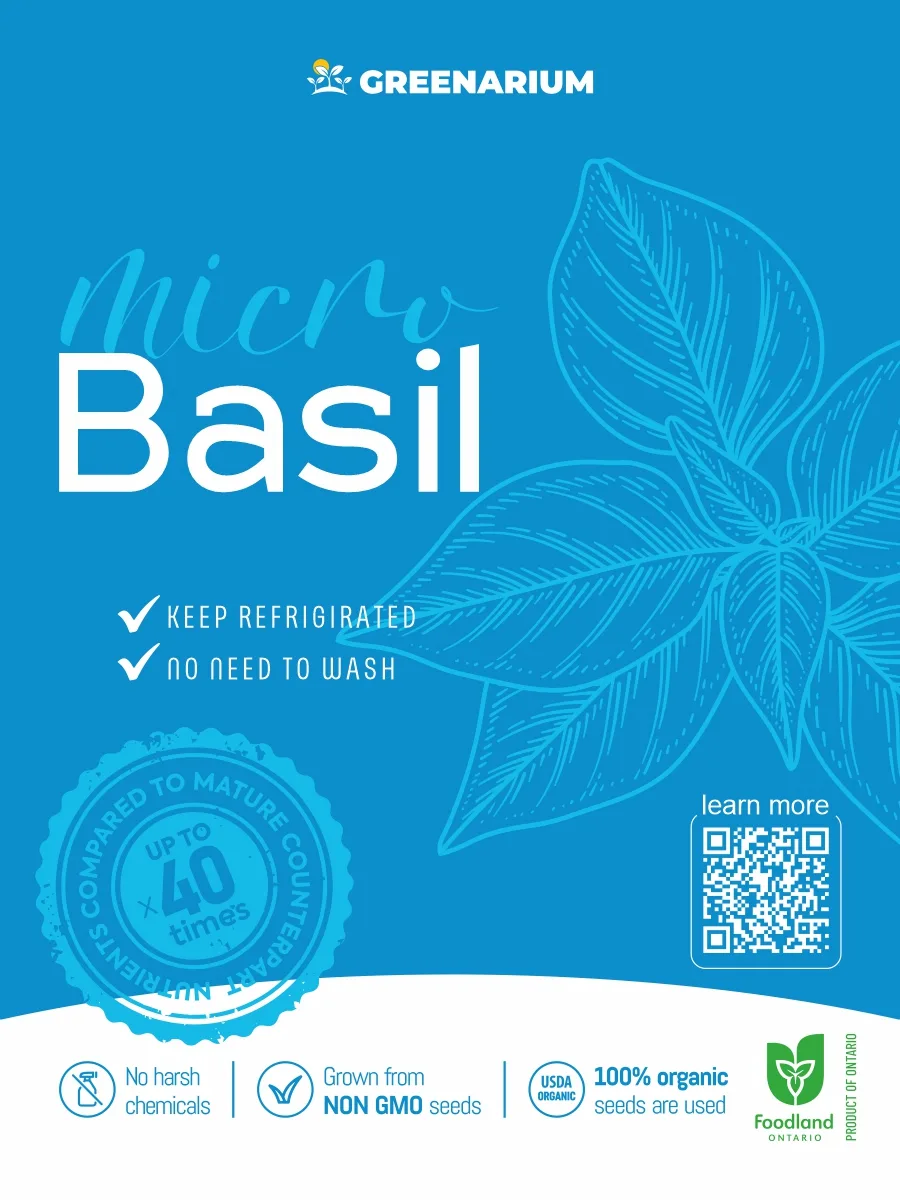Basil Microgreens
Basil microgreens have a unique look and taste that set them apart from their mature counterparts. They are harvested when the sprouts are just a few weeks old, so they are smaller, more delicate, and have a milder flavor. The leaves are bright green and tender, with a slightly peppery taste and a subtle sweetness reminiscent of mature basil.

Basil microgreens are packed with nutrients and offer several health benefits, including:
- High in Antioxidants: Basil microgreens are a rich source of antioxidants like flavonoids, which help protect cells from damage caused by free radicals.
- Anti-inflammatory Properties: Basil microgreens contain compounds like eugenol and rosmarinic acid, which have anti-inflammatory properties that can help reduce inflammation in the body.
- Cardiovascular Health: Basil microgreens are a good source of vitamin K, which helps maintain healthy blood vessels and can reduce the risk of cardiovascular disease.
- Digestive Health: Basil microgreens contain fiber, which can aid in digestion and promote regular bowel movements.
- Immune System Support: Basil microgreens are a good source of vitamin C, which can help support the immune system and protect against infections.
- Anti-Cancer Properties: Basil microgreens contain compounds like apigenin and luteolin, which have been shown to have anti-cancer properties.
Overall, including basil microgreens in your diet can be a tasty and nutritious way to support your overall health and well-being.
Basil microgreens can be used in a variety of ways to add a burst of fresh basil flavor to your dishes. Here are some ways to use basil microgreens:
- Salads: Add basil microgreens to your favorite salad for an extra layer of flavor and nutrition.
- Sandwiches and wraps: Use basil microgreens in sandwiches, wraps, or as a garnish to add a fresh, herby taste.
- Pasta dishes: Sprinkle basil microgreens over your favorite pasta dishes or use them as a topping for pizza.
- Soups: Add basil microgreens to soups and stews for a burst of fresh flavor.
- Smoothies and juices: Basil microgreens can also be added to smoothies and juices for a boost of nutrition and flavor.
- Pesto: Use basil microgreens to make homemade pesto for a fresh and flavorful twist on the classic recipe.
Remember, basil microgreens have a delicate flavor, so they are best used as a garnish or added to dishes just before serving to preserve their flavor and texture.
Nutrient facts table for 60g of basil microgreens, based on USDA data:
| Nutrient | Amount per 60g | % Daily Value |
|---|---|---|
| Calories | 10 | 0.5% |
| Total Fat | 0.2g | 0.3% |
| Saturated Fat | 0g | 0% |
| Trans Fat | 0g | 0% |
| Cholesterol | 0mg | 0% |
| Sodium | 8mg | 0.3% |
| Total Carbohydrate | 2.1g | 0.8% |
| Dietary Fiber | 1.0g | 4% |
| Total Sugars | 0.9g | |
| Protein | 1.3g | 2.6% |
| Vitamin D | 0mcg | 0% |
| Calcium | 51mg | 3.9% |
| Iron | 1.2mg | 6.7% |
| Potassium | 327mg | 7% |
| Vitamin A | 769IU | 15.4% |
| Vitamin C | 8.3mg | 13.8% |
| Vitamin E | 0.8mg | 4% |
| Vitamin K | 139mcg | 173.8% |
Note: Percent Daily Values are based on a 2000 calorie diet. Your daily values may be higher or lower depending on your calorie needs.

